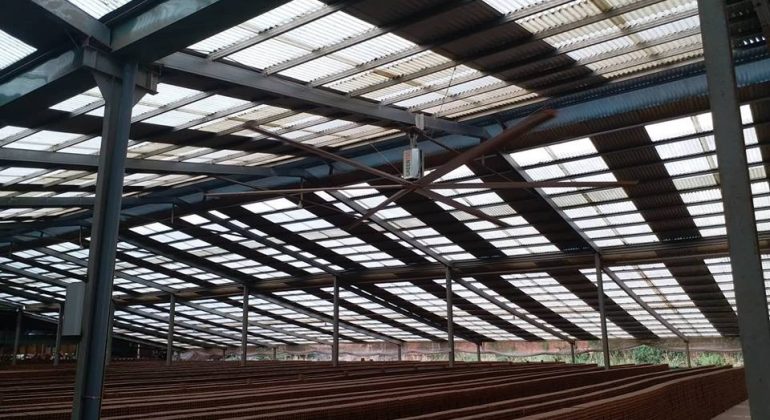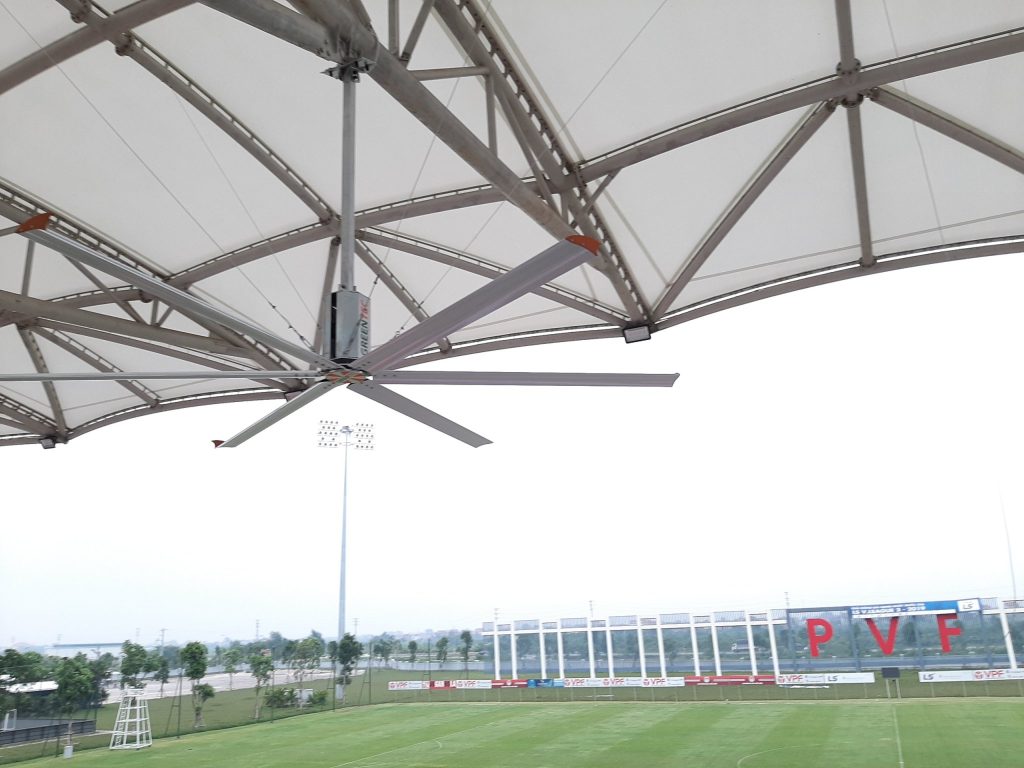What is a big ceiling fan?
Technically, big ceiling fans are usually ceiling fans and are commonly known as HVLS ceiling fans (High volume low speed fan). Large blade ceiling fans move slowly and distribute large amounts of air at low rotational speeds.
Typical applications for large ceiling fans fall into two categories Industrial and Commercial. The large ceiling fan was originally designed for large spaces such as barns, factories, warehouses, and workshops. They are also used in commercial spaces where air conditioning is more common, but increased air movement from ceiling fans can effectively increase occupant comfort or prevent stratification. Typical commercial applications include shopping malls, churches, office buildings, airport terminals, fitness centers, and schools.
An important concern for many commercial spaces, such as schools and libraries, is acoustic sensitivity and quiet operation. In contrast, industrial spaces have a median dBA of 85 or higher and favor air movement (effective in combating thermal stress) in silent operation.
Working principle of large ceiling fan
Large wingspan ceiling fans work on the principle of cool air movement, breaking the moisture-saturated boundary layer around the body and increasing the evaporation rate to create a cooling effect. They create a column of air as they rotate. This column of air moves down and along the floor. This horizontal airflow is related to the diameter of the fan and to a lesser extent the speed of the fan.
Commercial large span ceiling fans differ from residential ceiling fans in terms of diameter, rotational speed, and performance. While some fans use modern propellers to move the air, other methods are being used to make it more efficient such as using an aeroplane.
The benefits of a large ceiling fan
Air movement can have a significant effect on human thermal comfort. Wind chill in cold conditions is considered detrimental, but air movement in neutral to warm environments is considered beneficial. This is because normally in conditions where the air temperature is above about 74°F, the body needs to lose heat to maintain a constant internal temperature.
Unlike air conditioners, cool rooms, fans cool people. Ceiling fans increase occupant-level air speed, facilitating more efficient heat removal, cooling the occupants, rather than the space. The increased airspeed accelerates convective and evaporative heat loss from the body, thus making the occupants feel cooler without changing the dry bulb temperature of the air.
Hot air is less dense than cold air, causing hot air to naturally rise to the ceiling through a process called convection. In still air, the layers have a constant temperature, the coldest at the bottom and the warmest at the top. This is called stratification. The most efficient and effective way to mix air in a stratified space is to push the hot air down to occupancy. This allows for complete mixing of the air in the space while reducing both wall and roof heat loss, and the building’s energy consumption. To avoid causing a draft, the fan should be run slowly so that the airspeed at the occupancy level does not exceed 40 feet per minute (12 m/min).
Conclude:
Due to its large diameter and specially designed large span ceiling fan, only one HVLS industrial ceiling fan is needed to create a comfortable and balanced airflow in large industrial spaces, compared to 34 industrial fans for same result
In fact, compared to most common industrial fans today such as ventilation fans, industrial exhaust fans, industrial cooling fans (industrial floor fans, industrial standing fans, industrial trolley fans, fans) industrial wall mounted, industrial ceiling fans, etc.), industrial blowers, such as centrifugal fans and cooling towers, large span ceiling fans provide a more efficient means of keeping employees comfortable. Large ceiling fans help industrial spaces such as warehouses and distribution centers increase comfort levels while saving costs by moving static air with the absolute lowest operating costs.


